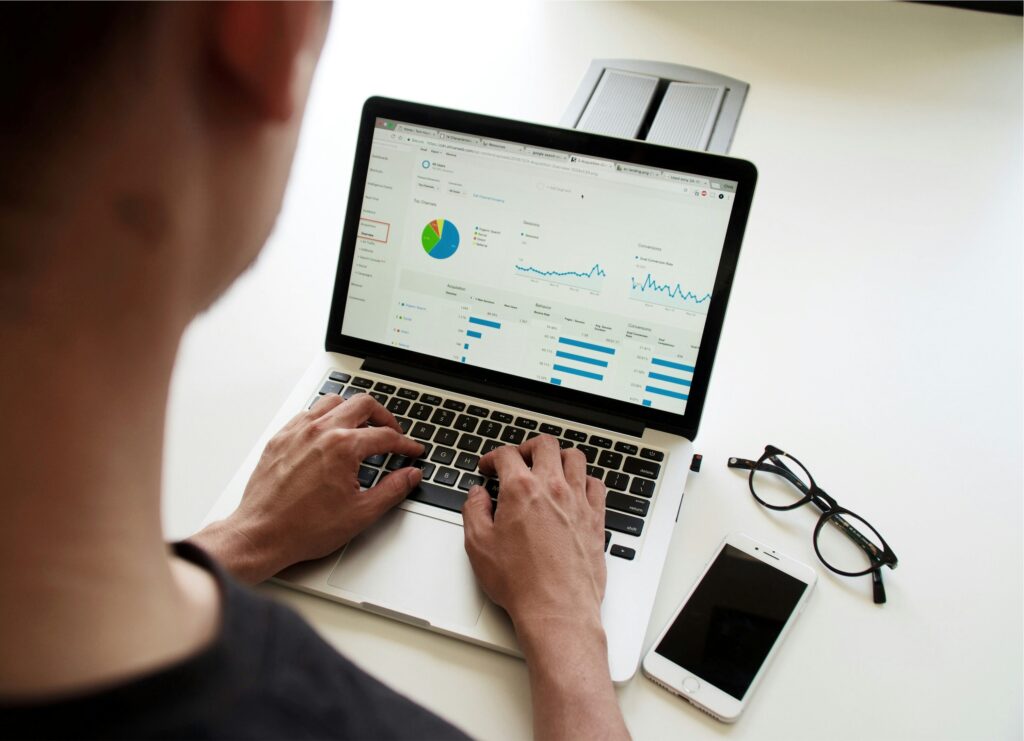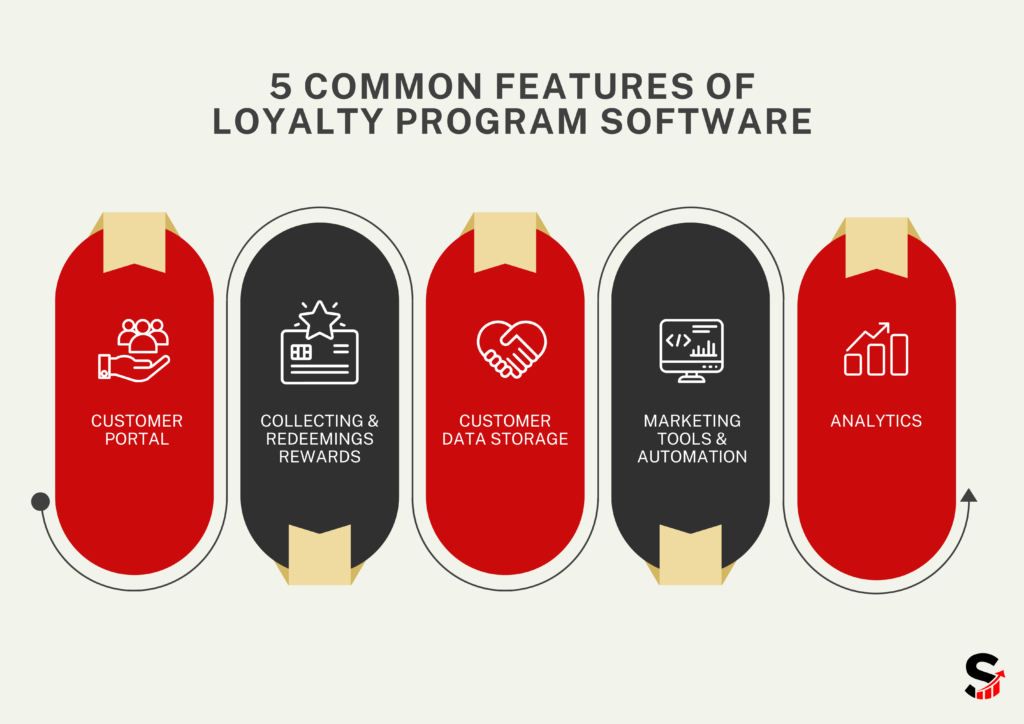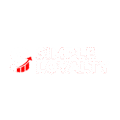
Look, if you’re a restaurant owner and have yet to implement a loyalty program, you’re basically leaving money on the table!
Maybe you’re holding back because you’re unsure about making the investment, or perhaps you’re not entirely clear on how loyalty programs work and how they can benefit your business. We get it–choosing the right loyalty program can be overwhelming.
If you’re unsure about jumping straight into a full-fledged loyalty program, why not start by testing the waters with the free plan? It’s completely free and free forever! You’ll even have access to most of the advanced features, and if you’re ready to explore even more, you can take advantage of the 30-day free trial of the business plan. That way, you’ll have full access to all the features for an entire month–no strings attached!
Whether you’re a small startup or an established player, we’ll dive into the key differences of both options–so you don’t miss out on any opportunities to grow your business!
- What is a Loyalty Program?
- Is a Loyalty Program Worth the Investment?
- What Does a Loyalty Program Software Typically Include?
- Know The Key Differences Between Free and Business Loyalty Plans
- Should You Stick to a Free Loyalty Program For Your Business or Upgrade to a Business Plan?
- Examples of Large Loyalty Program Vendors and Their Clients
- Emerging Trends of Loyalty Programs in 2025
- Time To Decide Which Type of Loyalty Program Software
What is a Loyalty Program?
A loyalty program is basically a fun way to keep your customers coming back for more by rewarding them for their continued support. Think of Starbucks Rewards—where customers earn points for every purchase and can redeem them for free drinks or discounts.
It’s all about making them feel valued and appreciated, so they keep choosing you over and over again. Without a loyalty program, you are simply wasting an opportunity to show how valuable your customers are to you!

Is a Loyalty Program Worth the Investment?
If done right, absolutely! While there are upfront costs in setting up and maintaining loyalty programs, the potential long-term benefits–like customer retention, increased sales, and stronger brand loyalty– far outweigh the initial investment.
What Does a Loyalty Program Software Typically Include?
Now that we know the definition of loyalty program and if it’s worth it to consider, let’s look at what a loyalty program software is and what it usually includes.
Here’s what the dashboard of your loyalty program software would usually look like:
You might be thinking, “Why does the dashboard look so complicated? How do I even know where to start?”
Don’t worry–we’ve got you covered! Here are the features you can typically expect from a customer loyalty software:

So, what does this all mean? You might be wondering. No worries, let’s dive in and break it down:
Customer Portal
It’s a one-stop platform, usually available on a website or mobile app, where customers can easily manage their loyalty accounts. They can check their points, redeem rewards, check their status, and track how they’re engaging with the brand.
Collecting Points & Redeeming Rewards
Customers can collect points and redeem rewards either in-store (through cashiers, waiters, or payment kiosks) or online (through e-Commerce websites). This makes for a smooth experience, whether they’re shopping in person or online.
Customer Relationship Management (CRM)
A system that stores customer info like buying habits, preferences, and interactions. This helps you understand your customers better and offer personalized rewards. Loyalty programs use this data to group customers based on behavior or spending, making it easier to send tailored rewards and promos to the right people.
Marketing Tools & Automation
Loyalty programs often include automated marketing features, such as:
- Direct Messaging: Notifications via SMS, WhatsApp, or other messaging platforms to alert customers about new rewards, exclusive offers, or special events.
- Emails: Personalized emails to promote deals, remind customers about rewards, or re-engage lapsed users.
Analytics
There are various types of analytics that you could utilize, such as marketing analytics, loyalty program analytics, and customer data analytics.
Analytics helps you track key customer metrics like spending, visit frequency, and lifetime value, giving you the insights needed to fine-tune your loyalty program. You can utilize this data to adjust rewards or offers for better results. Plus, benchmarking against your competitors with similar pricing and offerings lets you see where you stand in the market. It’s a great way to spot gaps, adjust your strategy, and stay ahead of the competition while making sure you are meeting customer expectations.
Great–now that we’ve covered the common features of loyalty program software, what’s next?
If a Free Loyalty Program Software Meets Your Needs, Consider This…
When opting for free loyalty program software, the functionality is usually limited:
- Limited Omnichannel Support: Free versions, especially those from POS providers, are not typically integrated with e-commerce sites.
- Might Not Have Memberships: Without a membership, you are missing out on an opportunity to reward your loyal customers and offer a unique experience for VIP customers versus non-VIPs.
- Expiry Limitations: Some may not offer any expiry options at all, leaving customers’ points to accumulate indefinitely. Others might restrict the expiry period to just one year, which can be frustrating for both you and your customers. A major drawback is that these programs typically don’t have the ability to notify customers when their points are about to expire. Meaning customers may miss out on redeeming rewards, leading to dissatisfaction and disengagement [best to check out our dashboard > loyalty program > points expiry]
- Limited Redemption Options: Might offer fewer reward tiers and may not notify customers when they have earned enough points to redeem a reward, which could lead to lower engagement.
Know The Key Differences Between Free and Business Loyalty Plans
Now that we’re familiar with the common features offered in loyalty program software, let’s explore the difference between free and business plans.
Typically, a free loyalty program can often be found through your point-of-sale (POS) vendor. And for the business plan of loyalty programs, you often have two main options: your POS vendor or a standalone provider.

Data features offered by SimpleLoyalty
Let’s breakdown the data features offered by SimpleLoyalty and how you can use them:
Data Collection
Free:
Collects foundational data and insights into how customers interact, what they purchase, and potentially who they are.
However, there are some limitations, such as restricting the total number of members who can sign up. With fewer members, you’ll have less data to work with, which means fewer marketing opportunities and limited access to some of the more advanced features.
In other words, fewer members = less data = less marketing – fewer features, which could impact the depth and accuracy of the insights you’re able to gather compared to the paid option.
Business:
Offers about 80% of customer data accurately, which is a significant amount and critical for making data-driven decisions. Plus, you might get monitoring software to ensure that the data you collect from your loyalty program is accurate. By collecting a more complete and accurate picture of customer behaviors, you can make better-targeted decisions and strategies.
Storage & Retrieval
Free:
Provides dashboard CSV Extract, allowing you to download data in CSV format for offline analysis. This basic feature is suitable for businesses that need a simple way to store and retrieve their data. The CSV export functionality is standard and accessible but may not be sufficient for larger datasets or advanced data operations, and there might not have backups or security in place.
Business:
Offers 2-hour backups and works towards ISO 27001 certification. More frequent backups help keep your data safe and make recovery easier in case of an emergency. Plus, working toward ISO 27001 certification shows a serious commitment to protecting your data and keeping your business running smoothly–especially if you’re handling sensitive customer information.
Customer Segmentation
Free:
Allows you to group customers based on shared attributes like buying habits or demographics, making it useful for targeted marketing. The downside to this is that manual segmentation can take more time and effort. While it might contain some form of basic segmentation, for anything more advanced, you’ll most likely need to download the CSV data and process it yourself.
Business:
Automation of customer segmentation significantly improves efficiency. It helps you quickly identify and target the right customer groups, without the hassle of manually sorting through data.
Custom Campaigns
Free:
Allows you to segment customers and send personalized offers to each group. While you are able to launch targeted campaigns, it still requires more manual effort to configure and manage campaigns, which might be time-consuming.
Business:
Offers automated campaign launches and allows you to track campaign performance immediately, saving you a great deal of time.
Automated Marketing
Free:
You would have to manually handle customer engagement and re-engagement efforts, which can be time consuming. However, one of the key features we offer is how automations can turn 3 visits into a habit, helping to convert first-time customers into regulars.
In fact, nearly 99% of our clients have these automations active, making it easier for them to keep customers coming back without manual effort.
Business:
Offers activation and reactivation of customers, keeping your audience engaged. With customer audience propagation, it ensures you’re reaching the right people at the right time, reducing manual labor. Plus, it automatically calculates ROI, so you can measure your marketing success without all the extra work.
Automated Reports
Free:
You would have to manually track and analyze data.
Business:
Offers automated analytics and detailed reports to help optimize marketing outcomes. It includes automated ROI attribution, giving you the tools you need to track and improve your marketing efforts. This makes it easier to make smarter decisions and understand what’s driving your success, all while simplifying ROI tracking to see how well your marketing is really performing.
But A Couple More Things to Keep In Mind…
- Non-dedicated vendors typically offer more basic solutions and may lack key features like a dedicated members’ portal, such as a member’s portal, where customers can track their rewards, points, and engagement. Without a portal, customers might feel disconnected from the loyalty program, which can affect their overall experience and engagement.
- Each stage comes with its challenges when implementing and managing a loyalty program. In the initial stages, choosing the right platform and designing an appealing program can be overwhelming. As the program rolls out, tracking data, adjusting rewards, and keeping customers engaged takes time and effort. As your business grows, scaling the program and meeting evolving customer expectations becomes more complex. It is crucial for you to stay focused, adaptable, and equipped with the right tools to tackle these challenges.
Should You Stick to a Free Loyalty Program For Your Business or Upgrade to a Business Plan?
Many businesses start with the free loyalty program included in their point-of-sale (POS) system. Why not, right? It’s free! However, as your business grows and evolves, you may find that the free version no longer meets your needs. Here are some signs that it might be time to upgrade to a paid loyalty program:
- When your business starts being stagnant and seeing little growth in your business
It could be a sign that it’s time for a change. A free loyalty program might not be enough to drive new customers or keep existing ones engaged, hence upgrading to a paid customer loyalty program can give you the tools and features needed to boost customer retention and attract more business.
- When you have set new business goals/objectives
With your new business objectives, the basic loyalty program might not cut it. You might be looking to personalize marketing campaigns, automate rewards, or obtain more detailed analytics, which a paid loyalty program can offer. An upgraded version can help you meet these new objectives, making your customers feel valued while giving you the advanced features you need to drive growth.
- When current reports and/or insights are no longer useful
If your current loyalty program is only providing basic insights into customer behavior, it might hinder your ability to make data-driven decisions. Upgrading to a premium loyalty program gives you access to deeper insights into purchasing trends, customer engagement, and program effectiveness.
- When your customer base in expanding and require more complex management
As your business grows, so will your customer base. If you are experiencing an influx of new customers, a premium loyalty program can help manage this growth effectively. A paid customer loyalty program often comes with advanced features like tiered rewards, which can cater to different customer segments and encourage higher spending among loyal customers.
Examples of Large Loyalty Program Vendors and Their Clients
When it comes to loyalty programs, there are a lot of major players out there offering loyalty programs tailored to different industries. Here’s a quick peek at some of the top loyalty program providers and the big-name clients they serve.
B2B Focused Loyalty Programs
Salesforce
Known for its powerful customer relationship management (CRM) tools, Salesforce helps companies create customized loyalty programs. Companies like Headspace, Sonos, and Paypal benefit from its robust data analytics and customer engagement solutions.
Square
Square may be popular for its point-of-sale (POS) solutions, but its loyalty program takes customer engagement to the next level by seamlessly integrating into every transaction. Businesses can effortlessly reward customers right at the register, making the experience smooth and rewarding–literally! This encourages customers to keep coming back for more. Notable names like Ben & Jerry’s, Shake Shack, and HMart use Square’s tools to strengthen customer relationships, boost engagement, and deliver personalized rewards.
Toast
Designed specifically for the restaurant industry, Toast’s loyalty program helps foodservice businesses build customer loyalty and drive repeat visits. Restaurants can offer personalized rewards, exclusive promotions, and special deals that keep customers coming back for more. Brands like Paris Baguette and Kaldi’s Coffee rely on Toast to enhance their overall customer experience to boost retention and loyalty.
Emerging Trends of Loyalty Programs in 2025
As customer expectations are changing and technology keeps leveling up, loyalty programs are getting a major makeover. To stay ahead of the game, businesses need to jump on the latest trends and rethink the old-school loyalty playbook. Here are some top trends that are shaping the future of loyalty programs:
Personalization at Scale
Customers today crave experiences that feel tailored to them. That’s why loyalty programs are getting a makeover, using data and AI to deliver customized rewards, offers, and messages. By tapping into customer preferences, purchasing habits, and past purchases, businesses can create more unique and exciting loyalty experiences, deepening their connections with customers.
Omnichannel Loyalty
Customers are interacting with brands everywhere–online, in-store, on apps, you name it. Loyalty programs are getting a major upgrade to keep up, making it super easy to earn and redeem rewards no matter where they shop. Where they are shopping in-store, on mobile apps, or via e-commerce platforms, tracking and rewarding their move across all these channels is becoming a game-changer for brands.
Gamification & Experiential Rewards
To keep things fun and exciting for customers, lots of businesses are adding gamification to their loyalty programs. Think earning points for hitting goals, completing challenges, or even simply engaging with brand content. Plus, customers are starting to crave more unique rewards–like VIP experiences, access to exclusive events, or special products–rather than just the usual discounts or free items.
AI and Automation for Enhanced Engagement
AI and automation are making it easier for brands to understand customer behavior and predict what they will need next. With AI in loyalty programs, businesses can improve further on how they can distribute rewards, tailor their messages, and automate their customer support. For instance, chatbots are being used to handle questions about loyalty programs, and AI-powered recommendations are suggesting personalized offers and products.
Time To Decide Which Type of Loyalty Program Software
Before launching your customer loyalty program, you need to first establish your business goals. Because when deciding between a free or paid loyalty program software, it all falls down to your business’ unique needs and growth stage. On one hand, a free loyalty program software can be a great starting point, offering basic features to engage customers and gather insights. On the other hand, as your business grows and customer expectations rise, upgrading to a paid loyalty program software can unlock more advanced tools like automation and deeper analytics that can drive higher engagement and retention.
Ultimately, the right loyalty program software for your business is one that aligns with your goals, enhances the customer experience, and helps you build lasting meaningful relationships with your customers.
Ready to level up your customer loyalty program? With SimpleLoyalty, you get detailed analytics and time-saving customer loyalty solutions to ease your transition process.

